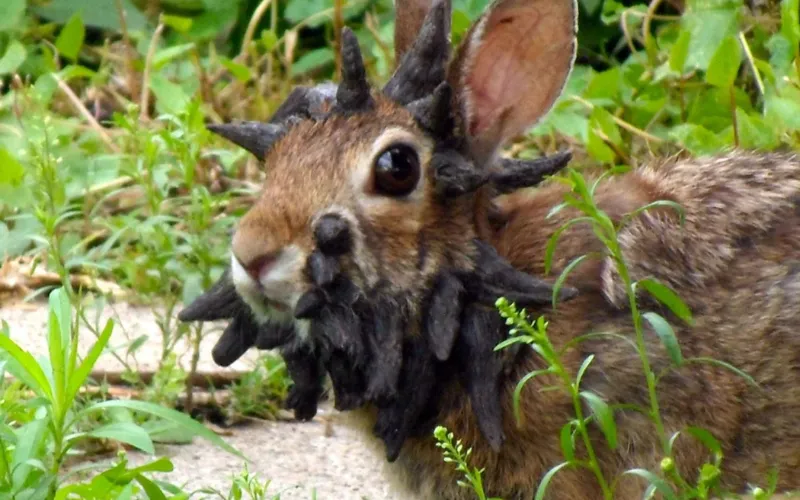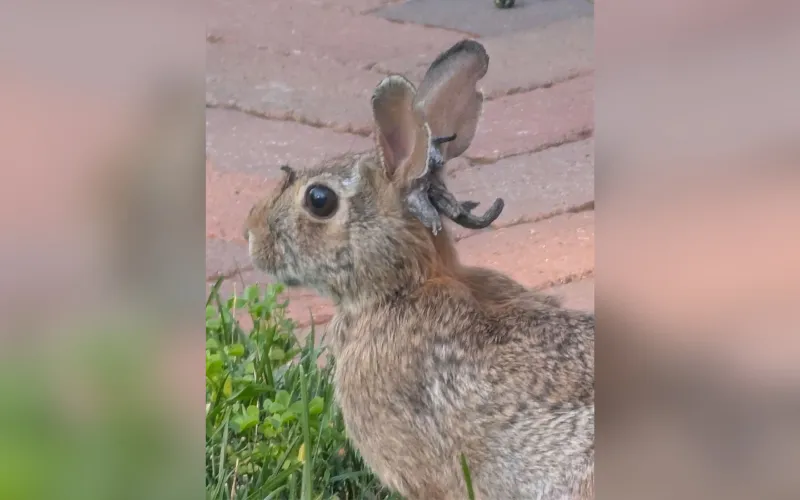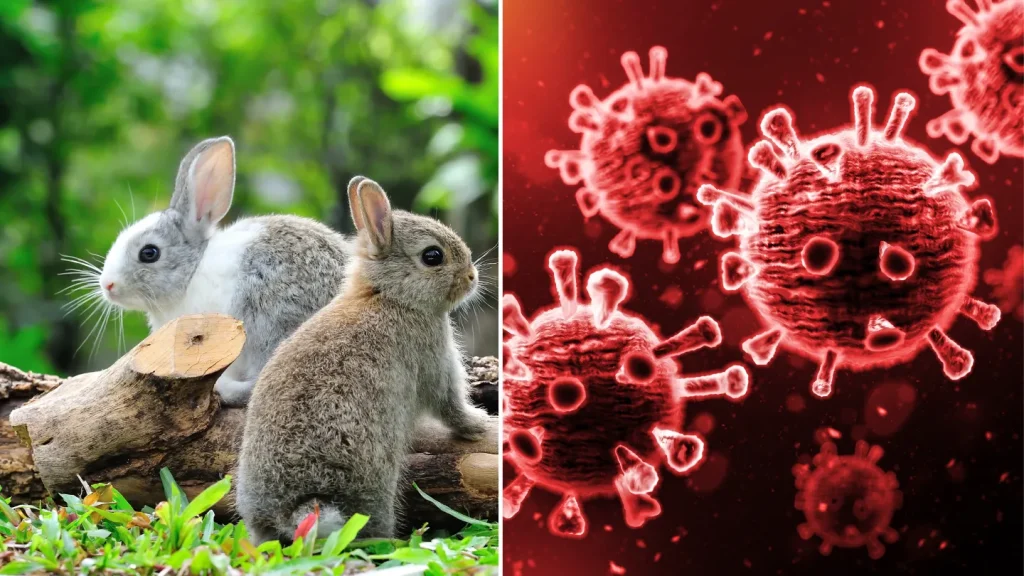Residents in Fort Collins, Colorado, have been doing double takes after spotting wild rabbits with strange, spike-like growths jutting from their faces.
The unusual appearance has led to a flurry of photos and speculation online, with some dubbing them “Frankenstein rabbits” or “tentacle bunnies.”
The creatures have been seen in backyards, along walking trails, and even crossing suburban streets. Witnesses describe the growths as black, toothpick-like projections clustered around the mouth and chin, making the animals look like something out of a science fiction film.
One local, Susan Mansfield, recalled seeing the same rabbit return to her yard for two years in a row. “It looked like black quills or black toothpicks sticking out all around its mouth,” she said. “I thought he’d die off during the winter, but he didn’t. He came back a second year, and it grew.”

While the bizarre sight has sparked concern, especially over potential health risks, wildlife officials say there is a clear explanation.
Colorado Parks and Wildlife (CPW) confirmed the animals are infected with the Shope papilloma virus, also known as cottontail rabbit papilloma virus, which only affects wild rabbits.
The virus causes wart-like t*mors that can grow large enough to resemble horns or dangling spikes. In most cases, it is not fatal, though it can pose a problem if the growths interfere with a rabbit’s ability to see or eat.
“It’s mostly benign in rabbits,” explained CPW spokesperson Kara Van Hoose. “We would be concerned only if the growths are on the eyes or impede the rabbit’s ability to eat.”

CPW says the disease is spread primarily through biting insects like mosquitoes and ticks, and occasionally through direct contact between infected rabbits. Importantly, it cannot be transmitted to humans, pets, or other animals.
The virus has a surprisingly long history. First identified in 1933 by scientist Richard E. Shope, it is believed to have inspired the legend of the jackalope.
It is also an oncogenic DNA virus, meaning it has the potential to cause certain types of c*ncer in rabbits.
Infected rabbits may live for years with the condition, though some can develop malignant t*mors. For domestic rabbits, surgical removal of the growths is possible, but experts warn the public not to attempt handling or helping infected wild rabbits.
CPW urges residents to keep their distance and avoid letting pets approach the animals. While their appearance can be unsettling, officials emphasize the virus is relatively common and not a threat to public health.
So, the truth behind these “Frankenstein” rabbits is far less sinister than it seems. They are not a danger to people, but rather a reminder of the strange and sometimes startling realities of wildlife. And why giving wild animals space is always the safest choice.
Featured Image: (Canva)






